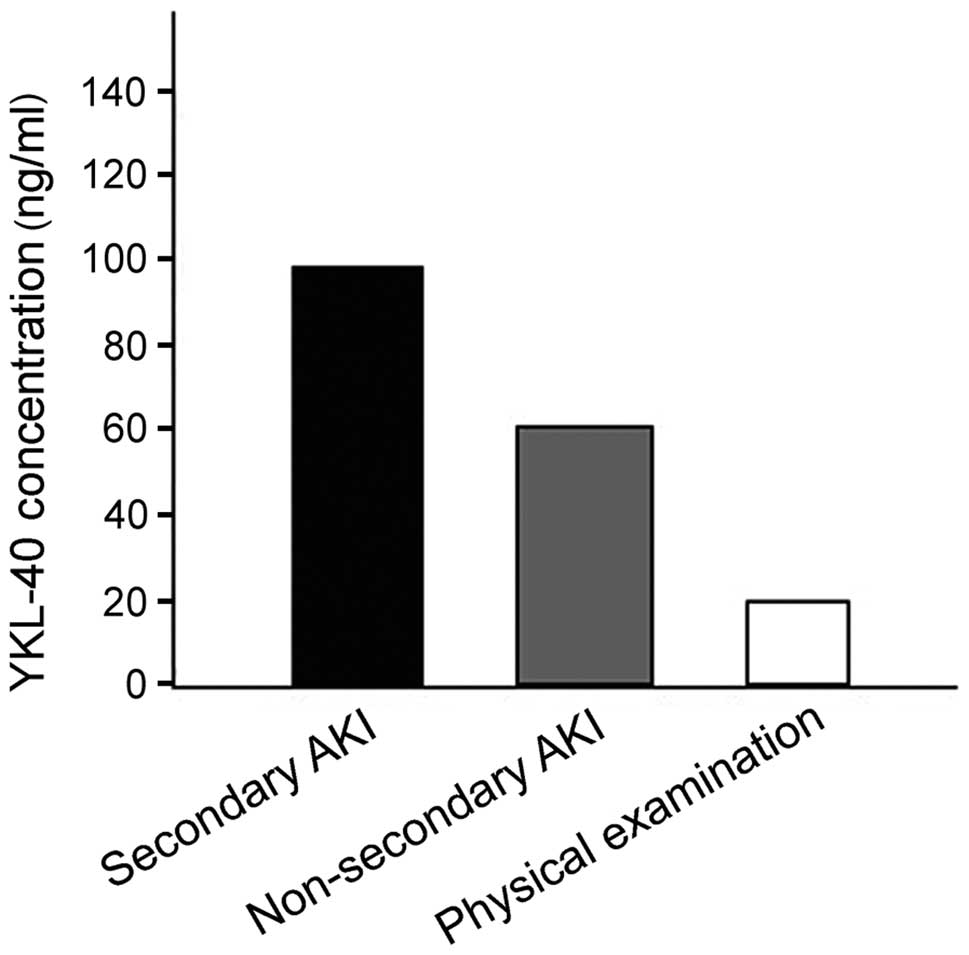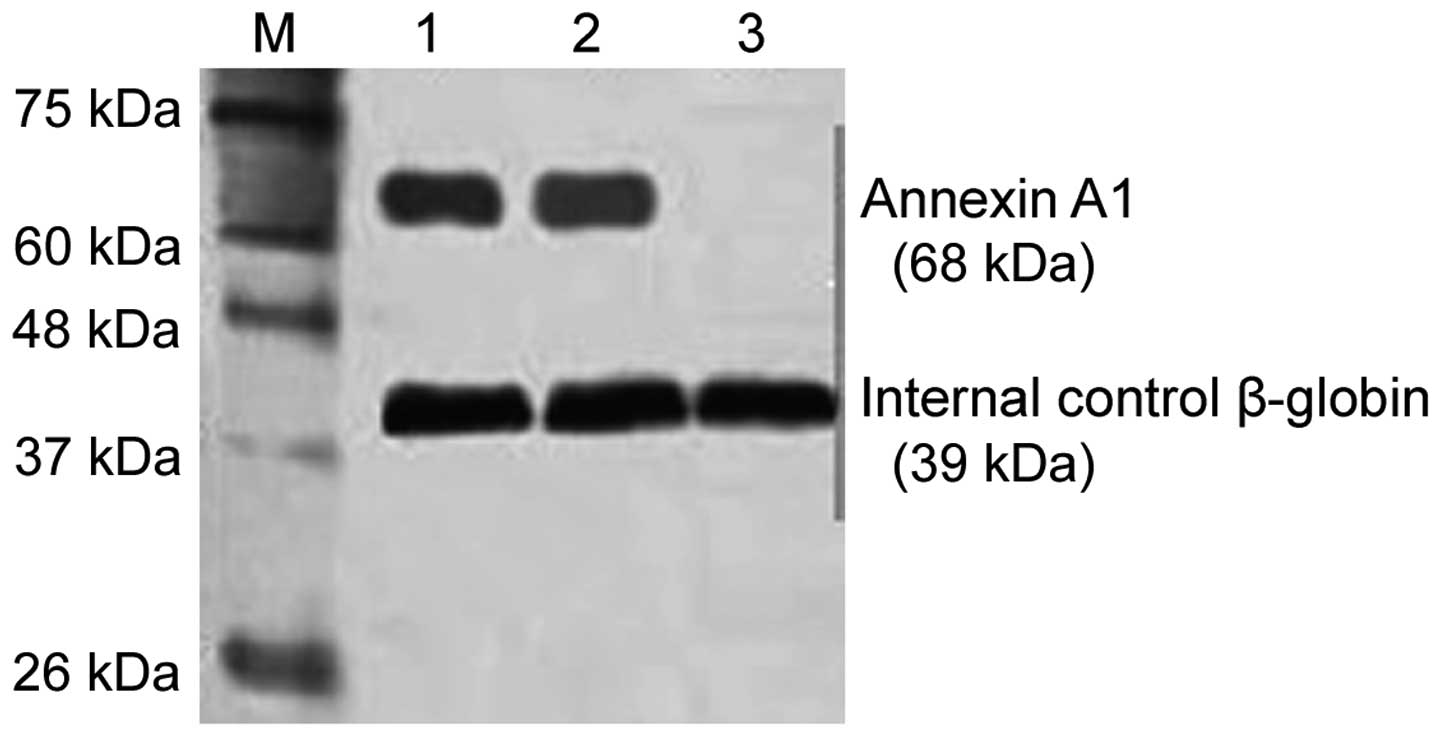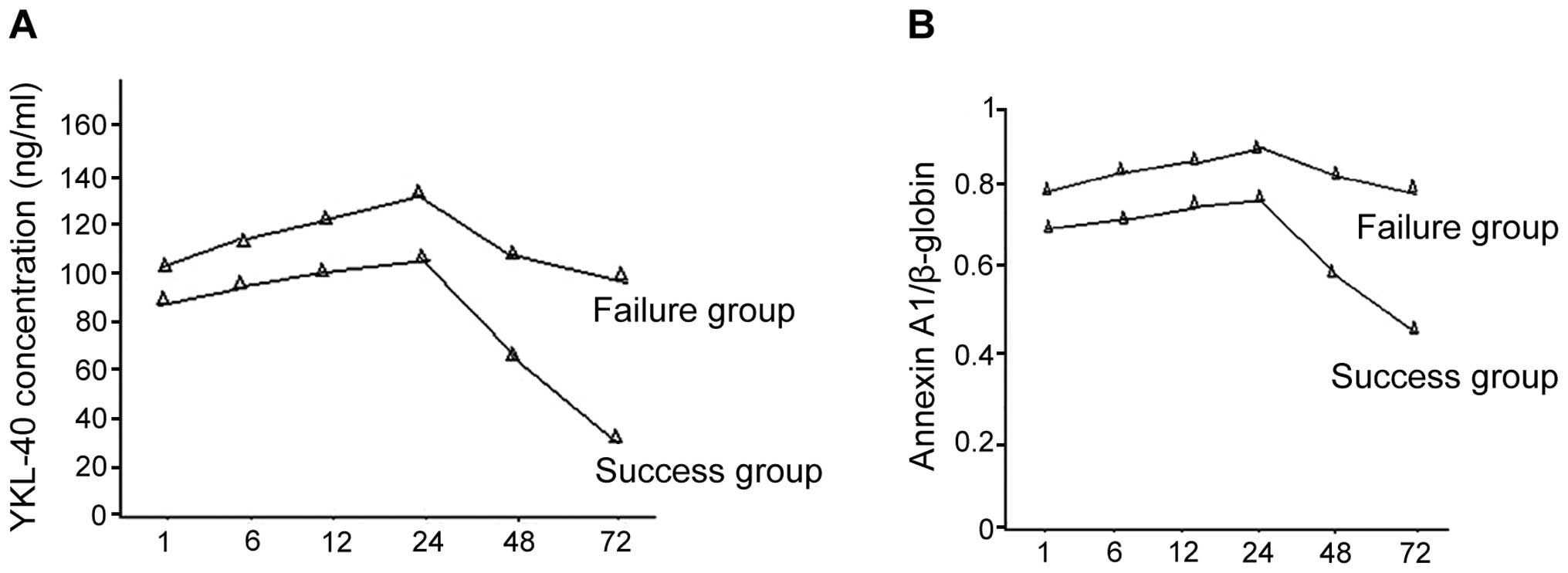Evaluation of CRRT effects on pyemic secondary AKI by serum cartilage glycoprotein 39 and Annexin A1
- Authors:
- Published online on: September 9, 2016 https://doi.org/10.3892/etm.2016.3691
- Pages: 2997-3001
-
Copyright: © Wu et al. This is an open access article distributed under the terms of Creative Commons Attribution License.
Metrics:
Total
Views: 0 (Spandidos Publications: | PMC Statistics:
)
Total PDF Downloads: 0 (Spandidos Publications: | PMC Statistics:
)
Abstract
The aim of the present study was to examine the effects of continuous renal replacement therapy (CRRT) on pyemic secondary acute kidney injury (AKI) by serum cartilage glycoprotein 39 (YKL-40) and Annexin A1. From October, 2013 to October, 2015, 45 pyemic secondary AKI cases and 40 pyemic non‑secondary AKI cases were selected for the present study. There were also 35 cases of physical examination volunteers. The serum YKL-40 and Annexin A1 levels were compared. CRRT was applied to pyemic secondary AKI patients and based on the obtained results the patients were divided into the success and failure groups. YKL-40, Annexin A1, hs-CRP, creatinine and urea nitrogen levels after 1, 6, 12, 24, 48 and 72 h of AKI were measured. The YKL-40 and Annexin A1 levels in the pyemic secondary AKI group were significantly higher than those in other two groups and differences were statistically significant (P<0.05). There was no statistically significant difference regarding time period for applying CRRT in the success and failure groups (P>0.05). The peak level of YKL-40 and Annexin A1 in the success group decreased more rapidly compared to the failure group and the difference was statistically significant (P<0.05). When the differences in creatinine and urea nitrogen levels at different time points were compared between the success and failure groups, no statistical significance was observed (P>0.05). However, the success group showed a significantly lower level compared to the failure group at 72 h. Comparisons for other time periods showed no statistical significance (P>0.05). Thus, the serum cartilage glycoprotein 39 and Annexin A1 level were able to predict the clinical effects of CRRT on pyemic secondary AKI.














